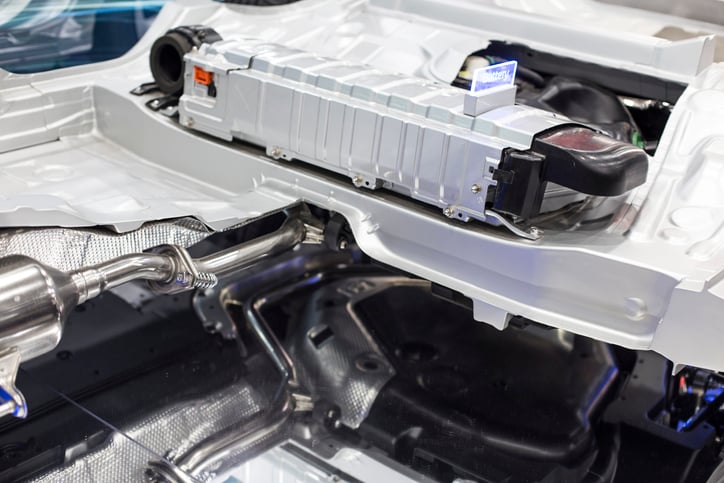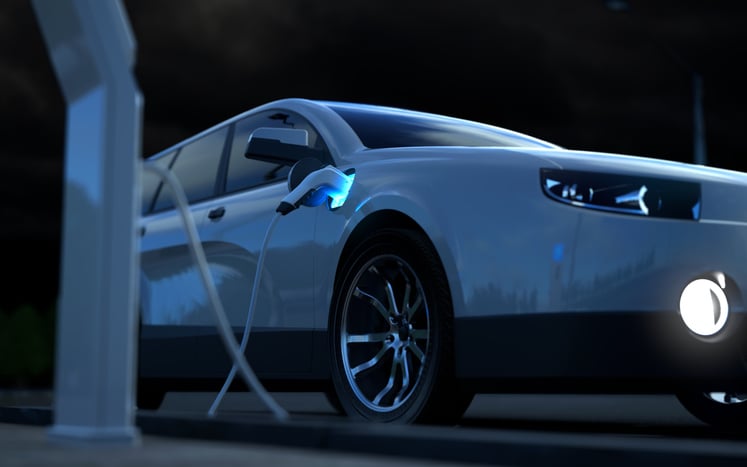How Battery Thermal Management Systems Impact EV Battery Performance

At the heart of every electric vehicle is its lithium-ion battery pack.
Without the power it stores and discharges, nothing else in the vehicle works. As the most expensive part of the vehicle, monitoring an EV’s battery health is essential to EV efficiency and performance.
Sensor technology helps the user monitor the vehicle’s battery to not only gauge how far their vehicle will take them, but also how much life their batteries have remaining. The intelligent battery management system can ensure confidence that despite heavy traffic, snowstorms, or other obstacles, their vehicle will get them to their destination in comfort.
While EV battery thermal management systems help manage temperatures and energy flow, sensors help regulate the system itself and provide alerts of potential problems.
Battery Thermal Management Systems & Sensor Intelligence
What’s an EV battery’s worst enemy? Extreme temperatures.
Lithium-ion battery cells perform best in a temperature range between 15-45℃. Colder temperatures reduce the output of the cells, decreasing range and available power.
Even when an EV isn’t in use (recharging), thermal management systems are always working to monitor or maintain internal temperatures to stay inside that range. While any temperatures outside the optimal comfort zone will impact EV car efficiency, the vehicle has clever systems to keep the system in its own comfort zone. Generally, when discharging, the batteries prefer to stay below 45 deg C, and while fast charging, they like temperatures somewhat above that temperature, around 55 deg C, to reduce the internal impedance of the cells and allow the electrons to quickly fill the cell. Much above that temperature can cause damage to the cells, so temperature management is a balancing act.
 Temperatures above 45℃
Temperatures above 45℃
Excessive heat damages lithium-ion batteries and extreme temperatures, such as those above 60℃ increase the risk to driver and passenger safety.
Beyond 45℃, an EV’s battery’s cells can degrade quickly, which requires that the system be controlled by heat exchangers that can both extract heat from the cells and add heat when the system is too cold.
What causes overheating in an EV battery?
When cells are actively charging or discharging, they generate internal heat. Most of this heat moves through the metal current collectors and is extracted in the busbar via convection or through the cold plate under the cells through conduction from the cells to the cold plate to the coolant, which then leaves the pack to reject heat through external heat exchangers. Care must be taken when fast-charging, as the cells will generate heat as they are charging and the heat must be absorbed and drawn away from the cells very carefully, as the cells must not exceed their maximum temperature.
To prepare for fast charging, the Battery Management System (BMS) may choose to increase the temperature in the pack by either slowing the coolant flow out of the pack or by engaging internal heaters to bring them close to the optimum fast charging temperature. Sophisticated models in the BMS determine the best strategy for controlling the heaters and coolant flow, and the temperature sensors at the cells and throughout the cooling system are needed to provide real-time data for the model to operate properly.
If the cells are charged too quickly and their internal temperature exceeds approximately 70℃, the system must take quick action to immediately reduce the temperature of the cells or heat-induced battery cell degradation can start the process of thermal runaway.
Though rare, thermal runaway in lithium-ion batteries is dangerous. When the battery becomes overheated, the heat triggers an exothermic chain reaction in the cell that generates gases, which can result in a fire inside the pack if the vented gas ignites. While thermal runaway is rare, if not mitigated by an EV’s battery pack thermal management system, the runaway can propagate to the rest of the battery pack. Once thermal runaway starts, it’s difficult to stop, so avoiding the event through careful thermal management is critical.
Regardless of the source of heating, temperature sensors within the EV battery thermal management system play an essential role in detecting excessive heat and engaging mitigating action.
Temperatures Below 15℃
Thermal management systems aren’t only about keeping an EV battery cool.
In cooler climates, the thermal management of electric vehicle battery systems induces heat to keep temperatures above the minimum. They heat the battery before it’s used — whether to power the vehicle, accept power from recharging, or act as a power source.
At colder temperatures, the internal kinetics of the cell causes lower charge and discharge rates, reducing available battery power. Cold temperatures slow the chemical and physical reactions that make EV batteries work efficiently. Without intervention, this would increase impedance (resulting in longer charging times) and lower capacity (resulting in range reduction). Forcing too much charge into the cells when they are extremely cold can cause the lithium to form dendrites, which can pierce the separator between the anode and cathode, causing a short circuit inside the cell. Therefore, charge rates are controlled in extremely cold climates to carefully warm the battery, increasing the charge rate only when the battery is above a minimum operating temperature.
Internal Combustion Engine (ICE) vehicles might appear to have an advantage when it comes to cold weather, generating substantial waste heat that keeps vehicles warm in cold temperatures. Without this waste heat, EVs must divert power from batteries to support heating and cooling. However, due to highly efficient design of the heat pump systems on EV applications, along with heated/cooled seats and other technologies to put heating and cooling only when and where it is needed, they have proven themselves to be much better vehicles to get stuck in a snowstorm or summer traffic jam in than their ICE ancestors.
EV Sensor Technology for Long, Optimized Battery Life
 Sensor technology placed throughout the battery pack is key to maintaining a battery in both the short and long term. Sensor technology engages the thermal management systems in electric vehicles to start working as soon as temperatures outside the comfort zone range are registered.
Sensor technology placed throughout the battery pack is key to maintaining a battery in both the short and long term. Sensor technology engages the thermal management systems in electric vehicles to start working as soon as temperatures outside the comfort zone range are registered.
Temperatures that are too hot or too cold have similar effects on an EV battery and its health. Excessive temperatures impact EVs in several ways, including:
Reduced charging capacity: Temperature extremes can increase the force it takes for the electric current that drives the lithium ions from one node to another within the battery and can cause damage to the nodes. Energy can leak and fail to be stored. The higher the current, the more likely batteries are to also suffer stress fractures, using up lithium and hindering energy flow.
- Reduced charging capacity: Temperature extremes can increase the force it takes for the electric current that drives the lithium ions from one node to another within the battery and can cause damage to the nodes. Energy can leak and fail to be stored. The higher the current, the more likely batteries are to also suffer stress fractures, using up lithium and hindering energy flow.
- Reduced ability to hold a charge: The length of time a battery can hold a charge also diminishes with temperature extremes. An EV at full charge might lose 20% of its power if left outside overnight in freezing temperatures.
- Reduced range: When charging capacity is reduced and batteries struggle to maintain the charge, an EV won’t be able to go as far on a single charge and requires more frequent recharging. Opting for a fast-charging cycle puts additional stress on the battery.
- Reduced overall lifespan: A battery that’s overtaxed by temperatures simply won’t last as long. Since replacing a battery in an EV is one of the consumer’s and manufacturer’s most expensive repairs, protecting battery lifespan is essential.
To manage these systems, the BMS makes use of coolant temperature sensors in and out of the pack’s cold plate as well as cell and busbar temperature inside the pack. This also extends to monitoring coolant temperature at the external heat exchangers, as well as pressure and temperature at the expansion valves and critical points along the refrigerant loop. This high level of monitoring by sensors provides critical data to control precise amounts of heating and cooling from these systems to optimize pack performance while minimizing the parasitic energy loss from running these pumps compressors, and auxiliary heating and cooling components.
The Rising Popularity of EVs Made Possible With Sensor Technology
More than 10 million electric cars traveled on the world’s roadways in 2020 — an increase of more than 40% from the previous year. In 2021, global EV sales are pacing at record levels. Analysts forecast an increase in sales of more than 80% from 2020 by the end of 2021.
Sensors placed through an EV’s battery pack and vehicle’s thermal management system to monitor temperatures not only help preserve the battery, but also the continued adoption of vehicles powered by an alternate energy source.
Dig Into EV Battery Pack Thermal Management
Explore our resource center for thermal runaway management, temperature, and pressure sensor portfolio to cost-effectively manage your battery system at:




